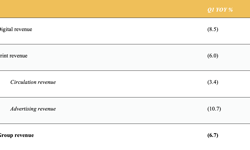Are you optimising all of the different types of files on your website so that they can be found on search engines? If you are, you are wisely managing your digital assets! If you have not yet optimised your images, video or news files, you may still have a small window of time to get this done before the competition, wiser on how to use Universal Search, pushes your site into search engine oblivion. Universal Search, already a reality in the United States, is spreading across the globe. For the site owner and search marketer, this presents both opportunities and challenges. Before you can respond to any challenge, it helps to understand what is at stake.
In recent years, search engines have added numerous vertical search databases. These include searchable databases for news, images, maps and video etc. To access this information, the searcher had to make an effort and go look for the information using tabs to bring up these vertical search elements. Web pages were in a separate more prominent place than news, video, image and blogs which were kept in separate vertical search databases. These data silos, although excellent repositories for each specific type of data, did not necessarily make it possible for the search engine to deliver holistic results to the searcher in a single easy-to-access page.
Vertical search, without much fanfare, has grown in popularity. Savvy site owners reviewing their analytics have observed a steady increase in traffic from images and other content found in vertical search engines. The growing volumes of traffic resolving to the vertical search silos was also proof to the search engines that users wanted to search for and find quantities of news, images, maps and video. In response to this user-driven demand, the search engines have made it easier for users to access this once semi-hidden information. Instead of hiding the information in plain sight as in the past, news, images and video have been moved front and centre.
What Happened?
In May of 2007, Google introduced in the United States a major change in how it ranks and displays content in its search results. The change itself has been named Universal Search, for it pulls together on the same search results page, content from the various vertical search silos. Now, the search results page in the United States includes a blend of listings from Google’s news, video, images, maps, local and book search engines as well as pages found through the regular crawling process. Not to be outdone, Yahoo! launched "blended" search which brings together similar elements. Ask and Live have followed suit with their own versions of blended search.
This new look required a significant change in the search engines’ infrastructures and interfaces. The data used to determine the relevancy of an image is somewhat different than the data used to determine the relevancy of a traditional web page. A video or map has its own special ranking criteria. The search engines have had to devise methods for merging and evaluating all of these factors, as well as delivering the actual results in the blink of an eye. Presentation of the results was a daunting challenge, for a user encountering a video result may want to evaluate more than the traditional text snippet. Viewing the video in the search results or being able to immediately read a news story with its attendant images is much more satisfying than the plain text snippet. A second challenge that the search engines faced was how to present the various types of information in an order that represents the unbiased mien of algorithmically derived results.
The resulting interface that allows the user to access the desired information directly from the search results page has created new demands and challenges for site owners and search engine marketers. Search marketing at its base is a battle for real estate with the results "above the fold" - the top results in the page - being more likely to be seen and clicked on than results further down the page or on subsequent pages.
Every search engine marketer’s dream has been to be in the number one position for every keyword relevant for their site (if not number one, then at least found on page one or perhaps the top of page two). Traditionally, organic search marketing has been a battle for the top links on a page of similar links. Now, Universal Search results in a page rife with visual distractions. No longer is it just other text content that you are competing with. The competition is now images, video and maps all on the same page.
Let’s see how this really looks. A Google search for "London expo" yields a results page where the top two results are for the same site – the London Expo, but wait, there are also eight sitelinks for the first result. These are generated algorithmically by the search engine and are a way for Google to suggest additional relevant pages economically. Then, there is a map and several videos from YouTube. This is not the traditional, familiar ten links on a page search results page. The above the fold real estate on this page is very limited for a marketer peddling only text-based content. With Universal Search, the equation has changed, and search marketers must reconsider not only how to seize the top real estate but also how to capitalise on the opportunities available for types of content heretofore un- or marginally optimised for search.
Are You Up to the Challenge?
Universal Search, where all types of content must compete for prime search real estate, requires that the search marketer optimise not only the text pages but also every image, every news release and every video - in fact every type of searchable content. Each piece of the searchable content should be considered a digital asset, and the search marketer is a digital asset manager / optimiser.
Some of the actual steps needed to optimise these elements are relatively straightforward, but most search marketing programs have not focused on the optimisation since there was limited return for the effort. For example, image optimisation begins with naming the images with meaningful names, not just numbers output from a database. This is not very difficult. Images should have captions and ALT text for visually handicapped users. Again, this is just thoughtful site construction. Oh, by the way, a search engine is just like a visually impaired user, it cannot detect the contents of the image and must rely on the cues we provide. That is not to say that search engine engineers are not eagerly working on how to parse images. Until such time as this is a reality, they must rely on clues we provide. It is to our benefit to provide them, since they will influence how relevant the image is to a search engine.
Have you overlooked the optimisation of multimedia? Have you joined the video revolution, but are still unsure of how to optimise your videos? Now is the time to learn. It really is not that difficult. Video is a very attractive medium. Visitors to video search seldom watch just one video. They watch multiple videos in each session. Including video content in the search results is yet another attractive distraction for the searcher who may or may not find your pages. Chances are, if you have not optimised all of the digital assets on your site, you will miss many opportunities to extend your marketing message via multiple media to users of a single search engine.
Where to Begin?
The first step to winning at Universal Search is to take a long hard look at your optimisation program. Consider all of the types of files that are now included in the Universal Search results page. Then, inventory all of your digital assets. How many images do you have? Is there video? Are there podcasts?
Are your press releases and your press archives optimised? Are you including images and other multimedia content with your press releases? These are not only picked by the media, they are also shown in the in-depth coverage of news search results. A Yahoo! search for "premier league" produces three images and provides a link to 216 photos. This is another opportunity to visually communicate your message.
Once you have the inventory, the second task is to clearheadedly evaluate your search optimisation. Have you really optimised your images? It is usually the case that you will find whole types of files that you have not considered previously appropriate for optimisation. These pockets of un-optimised content are zones of opportunity. Then, capturing the opportunity is a resource allocation challenge.
Be Sure to Monitor Your Results and Reputation
With Universal Search, it is imperative that you not only measure search traffic to your web pages, but you should also be sure to include traffic to the other elements included in Universal Search. If you have never included traffic from search to images or press releases, etc, now is the time to add them to your traffic measurements.
Because Universal Search brings in more than just web pages you create, you lose some control over what shows up on the web. For example, Yahoo! includes in their image search, photos from their photo-sharing site Flickr (www.flickr.com). For an example of this, a search in the image vertical for "premier league" yields a large number of photos from Flickr. In many instances, the photos are digital snaps taken by amateurs. It is helpful to look and see how you show up in the images. The best defence in this instance is a good offence. You need to make sure that you have optimised quality images online if you want to make sure that you are visually represented in the most flattering way. Each flattering image is also yet another positive brand impression.
Whether you harvest the potential traffic and visibility potential of Universal Search or let others dominate the page rests in how aggressively you optimise your website for Universal Search. The decision is yours to make, and don’t let the window of opportunity to gain first mover advantage close on you.
FEATURE
Ready, Set, Get Found
Just when you thought you had this whole search thing cracked, and all your web pages fully SEO’d ... along comes Universal Search. Well ... the good news is you don’t need to panic, but you do need to act. Otherwise, says Amanda Watlington, you will miss out to competitors more mindful of their digital assets.










